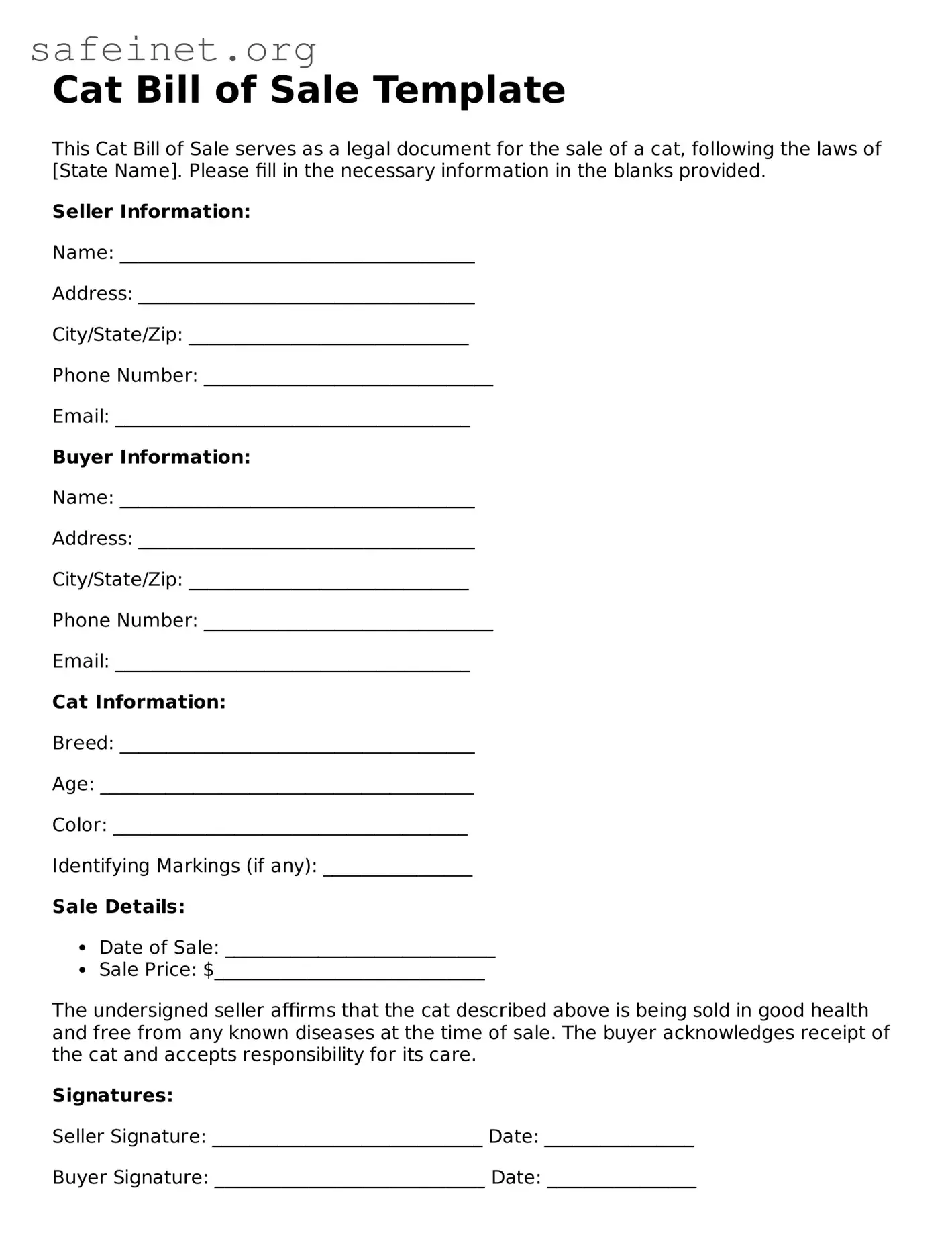Cat Bill of Sale Template
This Cat Bill of Sale serves as a legal document for the sale of a cat, following the laws of [State Name]. Please fill in the necessary information in the blanks provided.
Seller Information:
Name: ______________________________________
Address: ____________________________________
City/State/Zip: ______________________________
Phone Number: _______________________________
Email: ______________________________________
Buyer Information:
Name: ______________________________________
Address: ____________________________________
City/State/Zip: ______________________________
Phone Number: _______________________________
Email: ______________________________________
Cat Information:
Breed: ______________________________________
Age: ________________________________________
Color: ______________________________________
Identifying Markings (if any): ________________
Sale Details:
- Date of Sale: _____________________________
- Sale Price: $_____________________________
The undersigned seller affirms that the cat described above is being sold in good health and free from any known diseases at the time of sale. The buyer acknowledges receipt of the cat and accepts responsibility for its care.
Signatures:
Seller Signature: _____________________________ Date: ________________
Buyer Signature: _____________________________ Date: ________________
This document is not intended to provide legal advice. For more information, please consult with a legal professional or your local regulations regarding pet sales.
